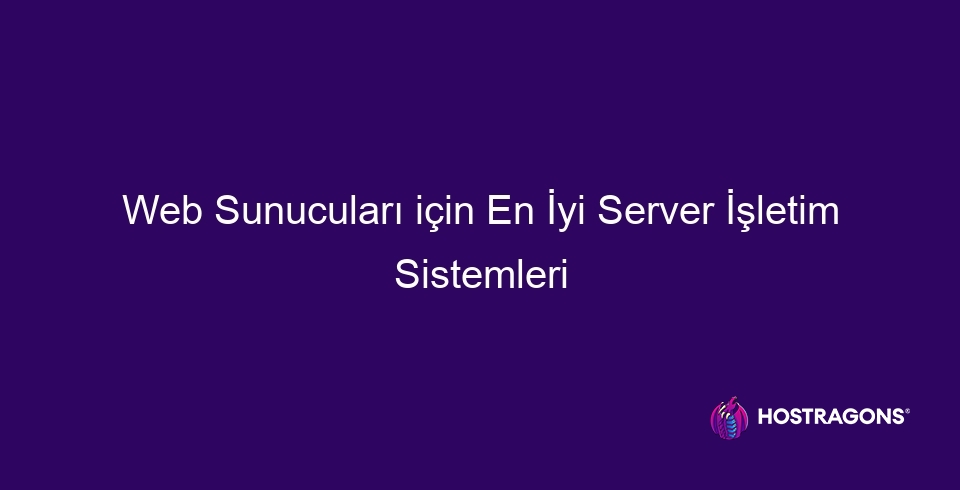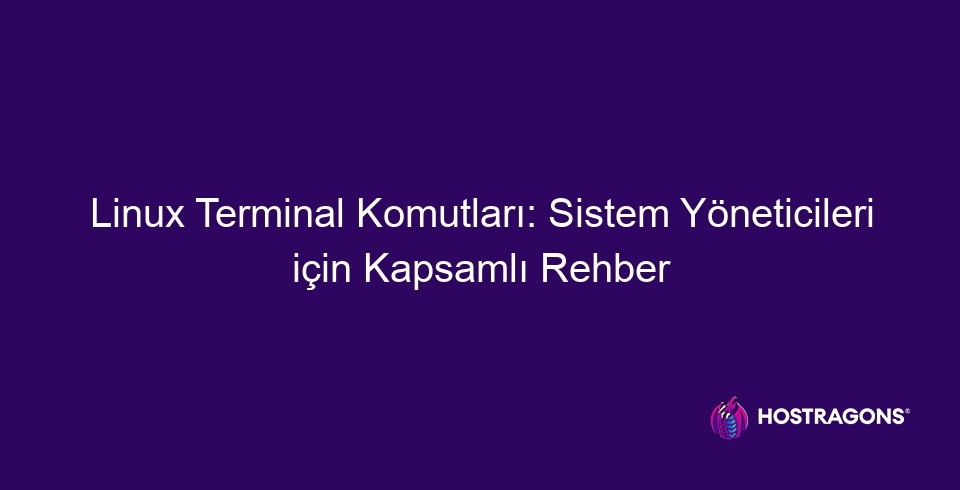Free 1-Year Domain Offer with WordPress GO Service

What is a Cron Job and How to Create It?
What is a Cron Job? This blog post provides a comprehensive guide for web developers and system administrators. It explains step-by-step what cron jobs are, why they should be used, and how to create them. Starting with the basics, it delves into the features and details of cron jobs. It also touches on the disadvantages of cron jobs, providing a balanced perspective. It delves into the topic with tasks you can automate, best management practices, and frequently asked questions. This guide, supported by example usage, shows how you can increase your productivity by using cron jobs. What is a Cron Job? The Basics Cron jobs are commands or jobs that are automatically run at specific times or regular intervals in Unix-like operating systems. System administrators and developers...
Continue reading

Best Server Operating Systems for Web Servers
This blog post examines the most suitable operating systems for web servers in detail. It begins by explaining what web servers are and why they're important, then compares the advantages and disadvantages of Windows Server and Linux servers. It addresses critical topics such as performance optimization, security measures, recommended software, backup strategies, and processor selection. The goal is to help readers make an informed decision by providing key considerations when choosing a web server. What Are Web Servers and Why Are They Important? Web servers form the foundation of websites and applications on the internet. Simply put, a web server processes web pages, images, videos, and other content that users (clients) request through their browsers.
Continue reading

Linux Terminal Commands: The Complete Guide for System Administrators
This comprehensive blog post provides a detailed guide for system administrators on using the Linux Terminal. It explains what the Linux Terminal is and why it's important, detailing the steps to getting started. It covers everything from basic commands to advanced features, from debugging to security measures. It also provides tips for efficient terminal use, common mistakes and solutions, and recommendations for success. This guide aims to provide the necessary information to enhance your Linux Terminal proficiency and perform your system administration tasks more effectively. What is the Linux Terminal and Why Is It Important? The Linux Terminal is a powerful tool used as a command-line interface (CLI) in Linux operating systems.
Continue reading

Lightweight Linux Distributions: A Guide to Reviving Old Hardware
Lightweight Linux distributions are an ideal solution for revitalizing older, low-end hardware. This blog post focuses on why Lightweight Linux is the best choice for older hardware and the best distributions. The key features of Lightweight Linux distributions, tips for improving performance, and a step-by-step installation process are explained. The importance of resource efficiency is emphasized, while applications and additional productivity-enhancing tools are introduced. Ultimately, Lightweight Linux shows how to bring your old hardware back to life. Why Choose Lightweight Linux for Revitalizing Old Hardware? Old hardware can become increasingly slow and unusable when faced with the increasing resource demands of new operating systems and applications. However,...
Continue reading

How Does the Linux Kernel Work? A Technical Overview
This blog post provides an in-depth review of the Linux Kernel. It first explains what the Linux Kernel is and its importance, then delves into its historical development and operating principles in detail. It then examines the Linux Kernel's fundamental components and structure to understand how this complex system functions. It lists the necessary requirements and recommended development tools for those who want to work with the Linux Kernel, and addresses common errors. Practical tips for exploring and understanding the Linux Kernel are presented, and a summary of its importance and future is provided at the end of the post. What is the Linux Kernel and Its Importance? The Linux Kernel is the heart of an operating system, providing the fundamental interaction between hardware and software. It utilizes computer resources...
Continue reading

User and Group Management on Linux Systems
User and group management on Linux systems is critical for system security and efficiency. This blog post examines in detail the basic concepts of user and group management in Linux systems, user types and authorization steps. While emphasizing the benefits of group management and security measures related to privilege management, user and group management tools are also mentioned. It is aimed to create a safer and more efficient environment in Linux systems by presenting effective group management strategies with common mistakes and advanced management techniques. As a result, the importance of user and group management is reinforced along with application methods. The Importance of User and Group Management in Linux Systems User and group management in Linux systems is a key part of system security and...
Continue reading

Docker and Container Orchestration on Linux Operating System
This blog post provides a comprehensive introduction to Docker and container orchestration on the Linux operating system. It first explains the fundamentals of Linux and the importance of container technology. It then details the integration of Docker with Linux, Docker Compose for multi-container management, and a comparison of different orchestration tools. The post also provides tips on container orchestration methods, the requirements, benefits, and challenges of using Docker and containers. The importance of container orchestration on Linux systems is emphasized, and guidance is provided for practical implementation. Linux Operating System Basics The Linux operating system is an open-source, free, and widely supported operating system. First developed by Linus Torvalds in 1991...
Continue reading

Linux Permissions System: chmod, chown, and File Access Control
Security and file access control are crucial in Linux systems. This blog post delves into the Linux permissions system, detailing the use of the chmod and chown commands. It explains how to change file ownership, the structure, and meaning of file permissions, and how to properly set these permissions for security. It highlights common mistakes and offers practical implementation strategies based on expert opinions. The goal is to help Linux users manage their file access securely and effectively, increasing system security while minimizing the risk of data loss. What is the Linux Permissions System? In Linux operating systems, the Linux permissions system controls who can read, write, and...
Continue reading

Optimal Resource Allocation and Performance Tuning for Linux Virtual Machines
This blog post focuses on optimal resource allocation and performance tuning in Linux Virtual Machines. First, an overview of the basics of Linux virtual machines is provided, and the process of resource allocation to virtual machines is examined in detail. Methods for preventing resource allocation errors, performance tuning for Linux virtual machines, and load balancing strategies are discussed. In addition, performance monitoring tools and techniques are provided, as well as tips for increasing efficiency. Practical and applicable outputs are provided to readers with strategies for improving user experience and suggestions for planning and optimization for the future. The aim is to make Linux virtual machines work more efficiently and optimized. An Overview of the Basics of Linux Virtual Machines Virtual machines (VMs) are physical...
Continue reading

Runlevel and Target Concepts in Linux Operating System
This blog post covers Runlevel and Target, which are the basic concepts of the Linux operating system, in detail. While explaining what Runlevel is, what it does, and its differences from Target, its importance in the system is also mentioned. In addition, Runlevel changing methods, best usage practices, and possible problem-solving suggestions are presented in the Linux operating system. While emphasizing the role of Target in the Linux ecosystem, an overview of Runlevel and Target concepts is provided with user-oriented tips and suggestions. It contains valuable information for system administrators and Linux users. Basic Concepts of the Linux Operating System The Linux operating system is an open source and free operating system used in a wide range of applications from servers to embedded systems today...
Continue reading

